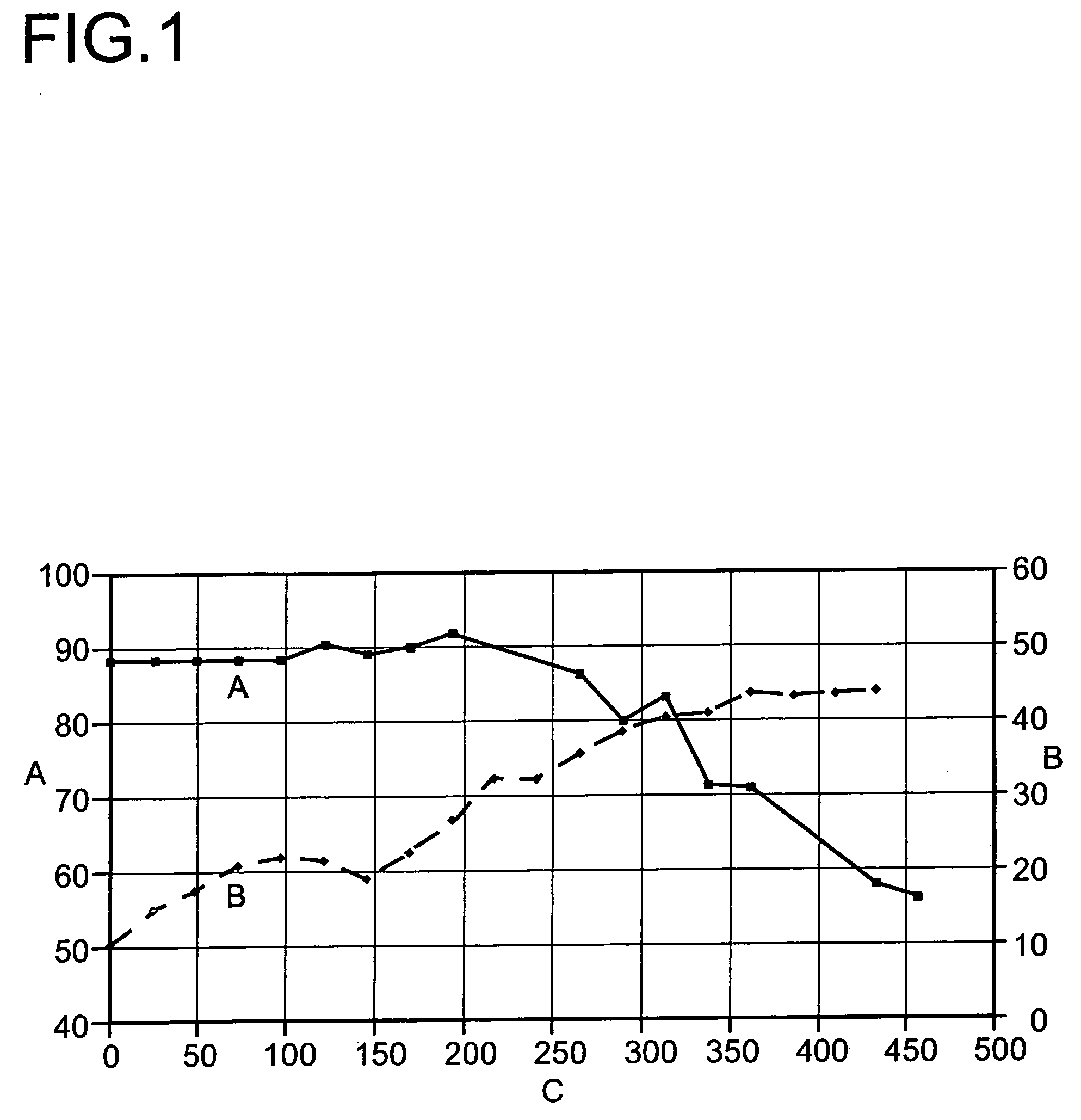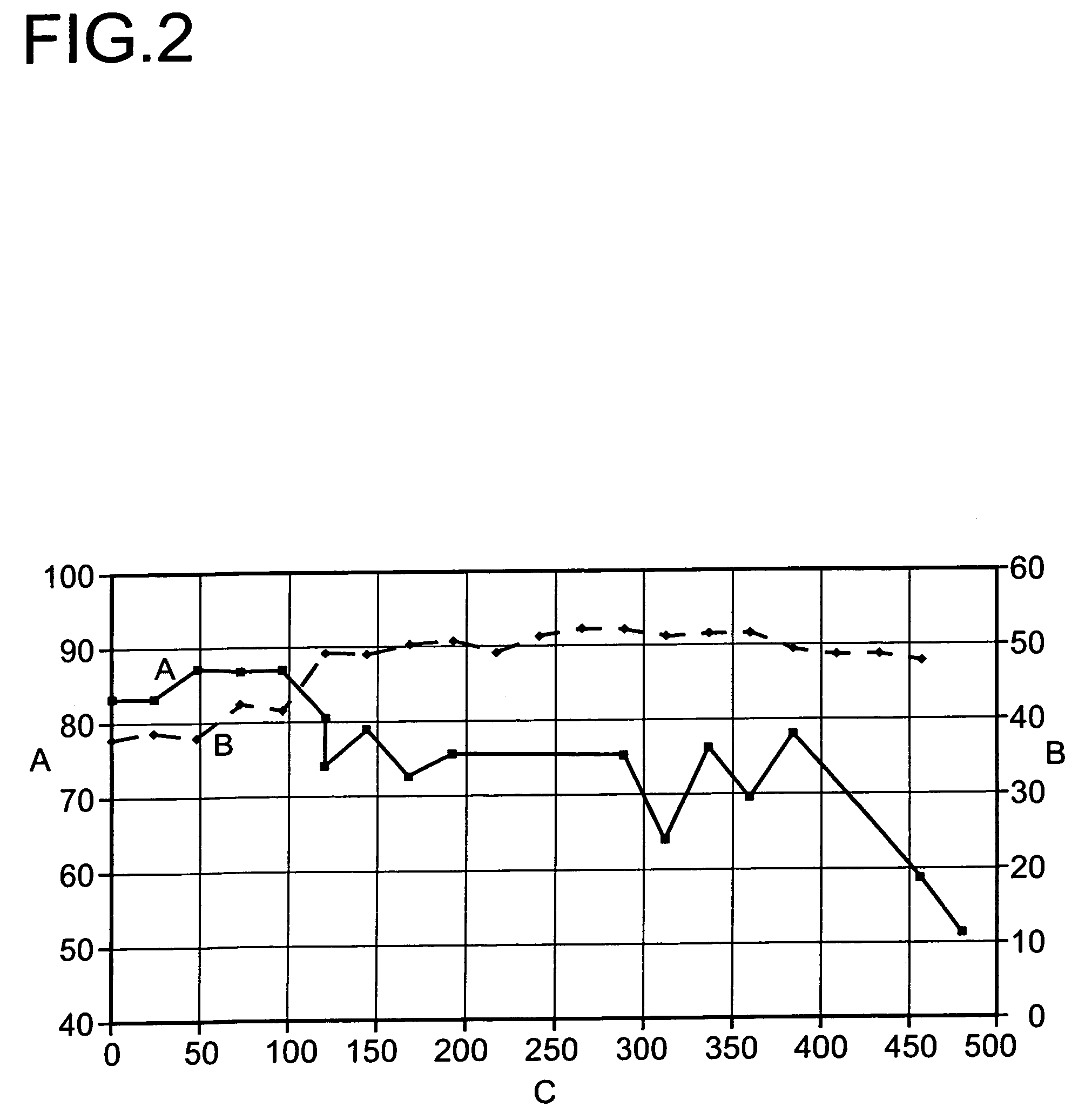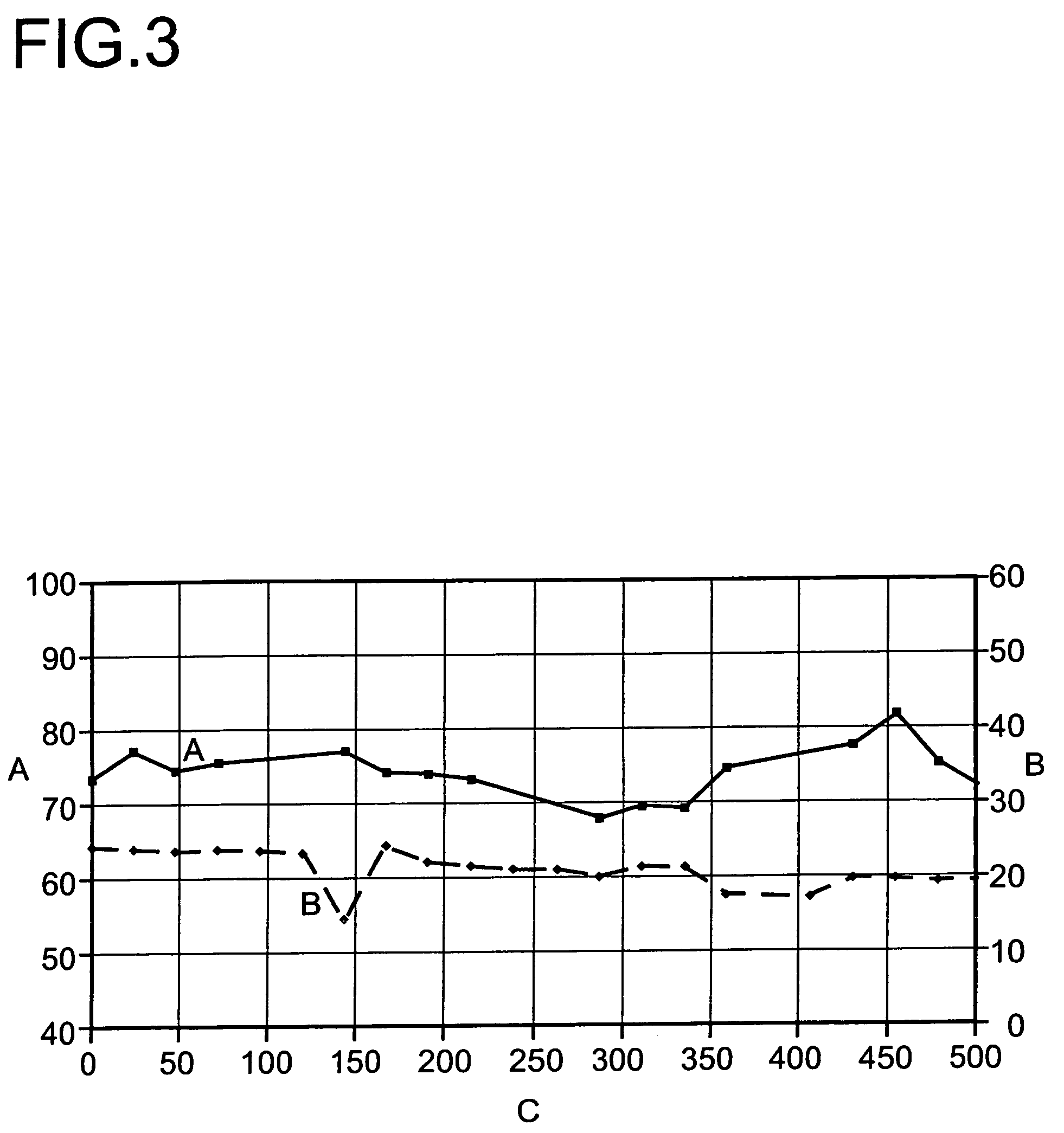Two-stage reactor for the production of melamine
a technology of melamine and reactor, applied in the field of melamine preparation, can solve the problems of inability to achieve periodic regeneration, inability to systematically study the properties or composition, and inability to use catalysts with an increased acidity,
- Summary
- Abstract
- Description
- Claims
- Application Information
AI Technical Summary
Benefits of technology
Problems solved by technology
Method used
Image
Examples
example 2
[0046]30 standard m3 / h of a gas from a fluidized-bed reactor operated using the least acidic catalyst (cat 3) from example 1 were fed into a fixed-bed after-reactor having a diameter of 13.5 cm and a catalyst bed height of 1.5 m.
[0047]The catalyst used in the fixed-bed after-reactor was 10×20×5 mm hollow extrudates of silicon-doped aluminum oxide which had the composition 95% of Al2O3 and 5% of SiO2 and had been calcined overnight at 550° C. after extrusion.
[0048]At about 400° C. and a pressure of 1.5 bar absolute, it was able to be demonstrated that a period of operation of >1500 hours at >90% total conversion without deactivation of the catalysts is possible (FIG. 4).
[0049]As a result of the combination of main reactor and after-reactor containing catalysts of differing acidity, a high conversion at high selectivity combined with low catalyst deactivation is observed.
[0050]The initial and final conversions achieved in example 1 and 2 are summarized once again in the following tabl...
example 3
[0052]3 kg of a material consisting of 5% of SiO2 and 95% of aluminum oxide hydroxide and 7 kg of a material consisting of 5% of SiO2 and 95% of γ-Al2O3 are mixed dry for 5 minutes and, after addition of 0.635 kg of 69.3% strength HNO3, diluted with 2.5 kg of deionized water and admixed with a further 4.3 kg of deionized water during compounding in a Mix-Muller.
[0053]Honeycombs having an edge length of 45×45 mm and length of 320 mm and possessing 6×6 cells having internal dimensions of 5.7×5.7 mm and a web thickness of 1.8 mm are extruded at a mold pressure of 50 bar and a temperature of 20° C. The shaped bodies are dried at room temperature. In a drying oven, the honeycombs are dried at 30° C. for 24 hours, then in 10° C. steps for 24 hours in each case up to 60° C. The honeycombs are dried at 60° C. for a further 24 hours. The honeycombs are finally calcined at 500° C. for 7 hours.
PUM
| Property | Measurement | Unit |
|---|---|---|
| pressure | aaaaa | aaaaa |
| pressures | aaaaa | aaaaa |
| temperatures | aaaaa | aaaaa |
Abstract
Description
Claims
Application Information
 Login to View More
Login to View More - R&D
- Intellectual Property
- Life Sciences
- Materials
- Tech Scout
- Unparalleled Data Quality
- Higher Quality Content
- 60% Fewer Hallucinations
Browse by: Latest US Patents, China's latest patents, Technical Efficacy Thesaurus, Application Domain, Technology Topic, Popular Technical Reports.
© 2025 PatSnap. All rights reserved.Legal|Privacy policy|Modern Slavery Act Transparency Statement|Sitemap|About US| Contact US: help@patsnap.com



